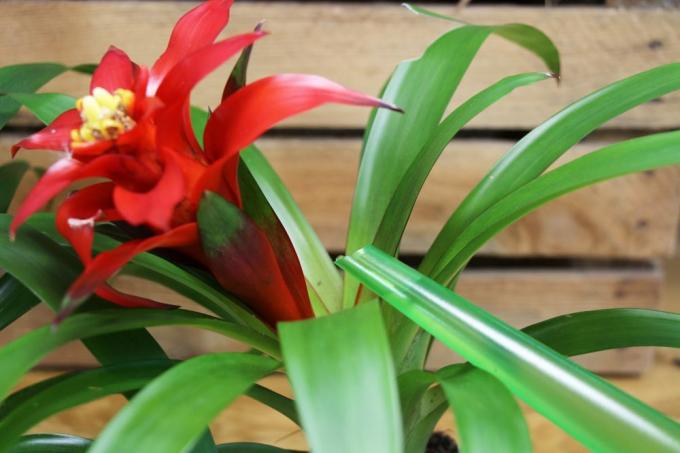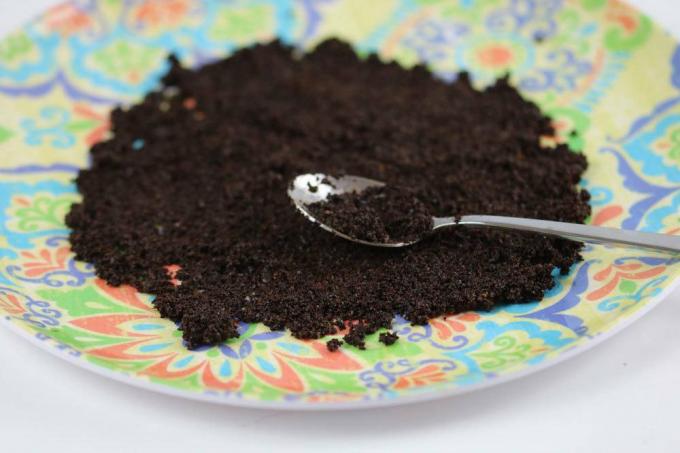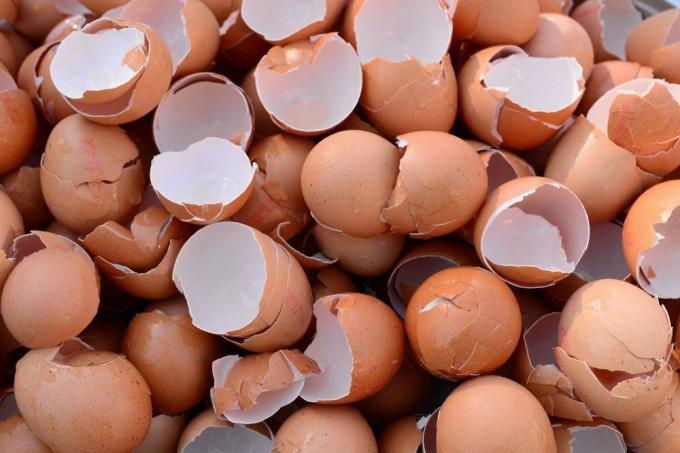
table of contents
- Why do you have to fertilize indoor plants?
- Necessary nutrients
- Don't forget trace elements
- What do you fertilize indoor plants with?
- Mineral fertilizers
- Naturally fertilize organically
- Suitable home remedies
- Disadvantages of home remedies
- When and how often to fertilize?
- Fertilizing according to the lunar calendar
- Golden fertilizer rules
Beautiful and healthy houseplants will delight every hobby gardener. Fresh green in the living room is good for the soul and has a calming effect. In order for you to enjoy your houseplants, it is essential to fertilize regularly.
Why do you have to fertilize indoor plants?
Regular fertilization is essential for indoor plants because the soil in the pot only provides limited nutrients. During its growth, the plant uses up the nutrients available from fresh substrate or fertilization. However, these are used up more or less quickly. Now the plant needs replenishment in good time if it is not to starve - because if the necessary nutrients are missing, the plant will no longer grow and will die at some point.

How long houseplants can survive without fertilization depends on the type of plant, its specific nutrient requirements and its growth rate. Basically, slowly growing plant species such as cacti have a low nutrient requirement and can therefore manage for a long time without an additional nutrient supply. Some plants even thrive without any additional fertilizers, provided they are repotted annually in fresh (and therefore nutrient-rich) substrate. Other green plants, on the other hand, grow very quickly and accordingly have a great appetite. Many popular houseplants such as the various Ficus or Dracaena species, the Dieffenbachia or the Green lilies need a basic supply of essentials every seven to 14 days between March and October Nutrients.
Necessary nutrients
In order for green plants to grow and thrive healthily, they need various nutrients in the right composition. The main nutrients - these are the ones that are indispensable for every plant - are:
- Nitrogen (abbreviated N, for nitrogenium)
- Phosphorus (P)
- Potassium (K)
- Magnesium (Mg)
A so-called NPK fertilizer contains all the important nutrients and is therefore suitable for the regular fertilization of indoor plants.

The individual components fulfill different functions in the plant metabolism: Nitrogen allows the plant to grow and increases the growth of shoots and leaves. In addition, nitrogen is indispensable for the formation of green leaves - if you value beautiful indoor plants with bright green leaves, you have to pay attention to a balanced nitrogen fertilization. But be careful with the dosage, because in excess nitrogen makes the tissue soft and susceptible to diseases and pests.
Phosphorus is necessary for the formation of roots and buds as well as for fruit and seed ripening. Green plants generally need a little less of this than flowering plants, as they rarely develop flowers and fruits. Potassium makes plant tissue firm and resistant to diseases and pests, and the substance is also important for photosynthesis. Magnesium is also essential for green plants, because this is what plants need above all for the development of leafy green.
Don't forget trace elements
But the main nutrients alone are not enough. Trace elements are those nutrients that plants also need to live - even if only in very small doses. Plants need for a smooth flow of life processes
- iron
- copper
- manganese
- molybdenum
- zinc
- and boron.

All four main nutrients as well as the essential trace elements must be contained in a commercially available complete fertilizer. These are dosed differently depending on the plant's needs.
What do you fertilize indoor plants with?
There are various fertilizers available for supplying your plants. The simplest solution is to use a ready-made product from a specialist retailer. This has several advantages, such as
- an optimal nutrient composition
- matched to green plants
- a guaranteed amount of nutrients
- optimal dosage recommendations
On the other hand, these fertilizers are often synthetically produced or mineral compositions, which in turn are problematic for ecological reasons - for example because of the Nutrient cycle is not adhered to or the raw materials used in production damage the environment cause. If you avoid such problems and value biologically harmless fertilization, you can use natural-based products or make them yourself. Some of the products in every household are also suitable for supplying your green plants with nutrients.
Mineral fertilizers

Mineral fertilizers are available in various compositions and forms. Liquid fertilizers that you add to the irrigation water are particularly user-friendly. Even fertilizer sticks that you just stick into the substrate are very easy to use. The disadvantage of mineral fertilizers, however, is the high proportion of nutrient salts, which is found in green plants that are sensitive to salt - for example, many Succulent species - quickly leads to over-fertilization. This in turn results in an increased susceptibility to (fungal) diseases and pests. On the other hand, if you use organic fertilizers, overdosing is less likely.
Tip: The correct dosage of mineral fertilizers depends on the salt sensitivity of the plant roots. For most green plants, two milliliters (resp. Grams) of fertilizer on one liter of water. It is essential that you adhere to the manufacturer's dosing instructions, use dosing aids and, if in doubt, make a solution too weak rather than too strong. House plants that are sensitive to salt, such as orchids and ferns, should be fertilized in particularly low amounts.
Naturally fertilize organically
Plant fertilization is natural and organic if you use fertilizers based on organic substances. These have several advantages:
- slow decomposition of the substances
- gradual release of nutrients to the plant
- therefore little risk of over-fertilization
- in addition, continuous supply of nutrients
- Long-term care
- No chemicals, therefore gentler on people and the environment

Special products based on organic raw materials such as compost or manure from specialist retailers are recommended for indoor plants. Use this in accordance with the manufacturer's recommendation. Basically, these fertilizers belong to the long-term fertilizers, so that you only have to supply your green plants with them once or twice a year. Long-term organic fertilizers provide the plants with all the nutrients they need for much longer than conventional mineral fertilizers.
Suitable home remedies
Basically, you don't even need to buy the fertilizer; you can use organic waste from your household. They are particularly suitable for fertilizing green plants
- Coffee grounds
- Tea bag (black tea)
- Eggshells
- Wood ash (probably for those who have a fireplace)
- and banana peels.

Are you one of those people who don't really wake up in the morning without their coffee? Then don't throw away the coffee grounds that arise every day! It contains the most important nutrients (v. a. the main nutrients nitrogen, phosphorus and potassium) and is ideal for fertilizing indoor plants. Dry the ground coffee, spread it out on a baking sheet, because it molds quickly when it is damp. But be careful: coffee is not suitable for permanent fertilization as it lowers the pH value of the substrate.
You can counteract this, for example, by giving crushed eggshells, because these contain lime and other minerals that are valuable for plant growth. Beware of lime-sensitive green plants: Under no circumstances should they be fertilized with eggshells! On the other hand, cooled wood ash, which contains a lot of potassium and provides various trace elements, is more universally applicable. Only use this agent if you have burned pure, unprocessed wood without any further additives. Incidentally, wood ash is also a good antidote to fungal and putrefactive diseases in plants.
Disadvantages of home remedies
You should think twice about using home remedies because they involve certain risks. The main disadvantages of coffee grounds, wood ash and the like are:

- do not contain all nutrients in the necessary quantities
- Nutritional composition is unknown
- therefore no exact dosage is possible
- Over or under dosage likely
- Malnutrition of green plants
- Occurrence of deficiency symptoms
- increased susceptibility to disease and pest infestation
Tip: Compost is a wonderful fertilizer that you don't even need a garden to make. With the help of a so-called worm box - a special composting container - you can even convert organic kitchen waste into fertile compost in your kitchen or on the balcony.
When and how often to fertilize?
The rule of thumb for the frequency of fertilization is as follows: During the growing season, house plants should always be fertilized every two weeks. However, differentiate between fast and slow growing species. Vigorously growing plants have a higher need for nutrients and should therefore be fertilized weekly, whereas slow-growing plants should only be fed every four weeks. If you use long-term fertilizers (for example in the form of fertilizer sticks), fertilizing two to three times a year is sufficient, depending on the manufacturer's instructions. The first application of fertilizer takes place in March, the second in summer between June and July. Since most plants take a break in the winter months between October and March, there is no fertilization during this time. Exception: plants without a dormant period.

Fertilizing according to the lunar calendar
The moon has a serious impact on our earthly life, this is confirmed above all by readers who live on the North Sea coast. Experienced houseplant gardeners attribute the different phases of the moon not only to the tides, but also to the effect of fertilizers. If you want to fertilize according to the lunar calendar, always apply the fertilizer when the moon is waning - if possible, on the days immediately after the full moon. At this point in time, nutrients should be absorbed into the soil more quickly and their effects should develop optimally. When the moon is waning, you can therefore dose the amount of fertilizer lower.
Golden fertilizer rules
Even if you now know when, how often and with what best to care for your green plants, you can still cause serious damage through incorrect fertilization. So that this doesn't happen to you, we have formulated these golden rules of fertilization for you:
- Never put the fertilizer on the dry root ball.
- Never fertilize in full sun.
- It is better to administer the fertilizer more often and in low doses than infrequently and in high doses.
- Only fertilize when the plant is growing.
- If the plant receives little light (for example in a dark location or in winter), it needs less fertilizer.
- If there is a lack of light, the nutrients are not utilized and, in the case of mineral fertilizers, the substrate becomes too salty.
- Stop fertilizing in the event of pest infestation and diseases.
- Only continue with the supply of nutrients again after successful control.
- Fertilization is by no means a substitute for regular repotting.
